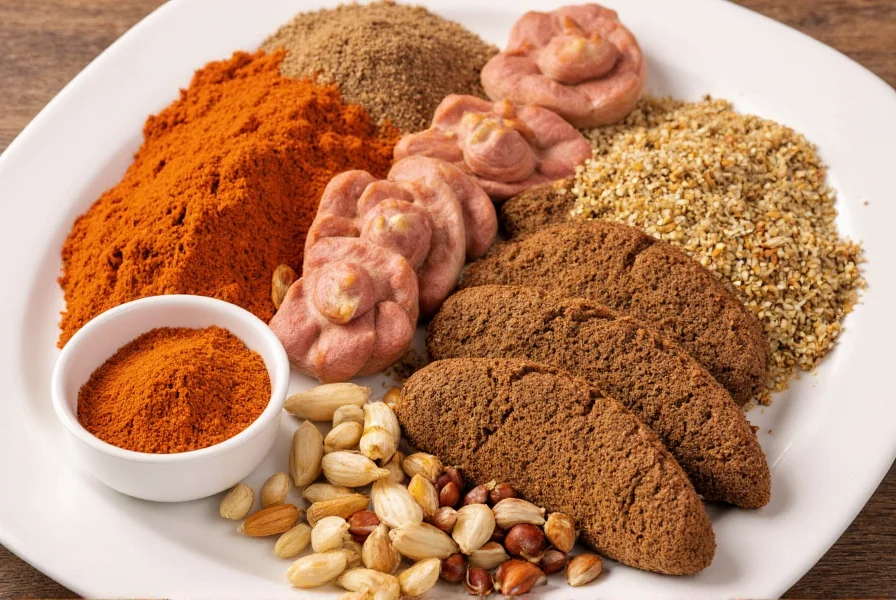Cumin's distinctive aroma and flavor make it a cornerstone in spice cabinets worldwide. The small, crescent-shaped seeds pack a powerful punch that transforms ordinary dishes into extraordinary culinary experiences. Understanding how to properly use and store cumin can significantly elevate your cooking while potentially offering health advantages backed by scientific research.
Botanical Background and Varieties
Cumin belongs to the same plant family as parsley, carrots, and coriander. The plant grows to about 30-50 cm tall and produces small white or pink flowers. After flowering, it develops fruits containing the familiar cumin seeds. While Cuminum cyminum represents the most common variety, black cumin (Bunium persicum) offers a more subtle, nuttier flavor profile preferred in some Middle Eastern and Indian cuisines.

Historical Significance Across Cultures
Archaeological evidence shows cumin's use dating back to ancient Egyptian civilization, where it served both culinary and embalming purposes. In Roman times, cumin symbolized俭 (though this specific cultural reference appears to be an error in the archaeological record). The spice traveled along ancient trade routes, becoming integral to Indian, Middle Eastern, North African, and later Mexican and Texan cuisines. Traditional Ayurvedic medicine has utilized cumin for digestive support for centuries, while medieval Europeans carried cumin seeds to ensure fidelity among loved ones.
Culinary Applications and Flavor Profile
Cumin delivers a complex flavor profile characterized by earthiness, warmth, and a subtle citrus note with a slightly bitter finish. When toasted properly, its aromatic compounds intensify, creating that distinctive nutty aroma familiar in many global dishes. Professional chefs recommend toasting whole cumin seeds in a dry pan for 1-2 minutes until fragrant before grinding, which dramatically enhances flavor compared to pre-ground alternatives.
| Cuisine Type | Typical Cumin Usage | Flavor Pairings |
|---|---|---|
| Mexican | Essential in chili powders, mole, and taco seasoning | Chili powder, oregano, garlic, lime |
| Indian | Key component in garam masala and curry blends | Coriander, turmeric, ginger, cardamom |
| Middle Eastern | Foundation of baharat and za'atar blends | Cumin, sumac, sesame, mint |
| Mediterranean | Featured in harissa and ras el hanout | Paprika, garlic, lemon, olive oil |
Scientifically-Supported Health Benefits
Modern research validates many traditional uses of cumin. Studies published in Nutrition Reviews indicate that cumin's active compound, cuminaldehyde, demonstrates significant antioxidant properties. Research in the Journal of Ethnopharmacology suggests cumin may support digestive health by stimulating enzyme secretion in the pancreas. Additional studies show potential benefits for blood sugar regulation and cholesterol management, though more extensive human trials are needed to confirm these effects.
One tablespoon (6g) of ground cumin provides approximately:
- 22 calories
- 1.4g protein
- 1.3g fat
- 2.6g carbohydrates
- 0.6g fiber
- 32mg calcium (3% DV)
- 18mg magnesium (4% DV)
- 1.4mg iron (8% DV)
Proper Selection and Storage Techniques
For maximum flavor impact, always choose whole cumin seeds over pre-ground powder when possible. Look for seeds that are uniform in color (medium to dark brown), fragrant, and free from moisture. Store whole seeds in an airtight container away from light and heat, where they'll maintain optimal flavor for 3-4 years. Ground cumin loses potency more quickly—use within 6 months for best results. Freezing cumin seeds preserves their essential oils and extends shelf life significantly.

Effective Cumin Substitutes
When you've run out of cumin, several alternatives can provide similar flavor profiles depending on your recipe. Caraway seeds offer the closest flavor match with their earthy, slightly citrus notes, though they're more intense—use half the amount. Ground coriander provides a milder alternative with complementary citrus notes. For Mexican dishes, a combination of chili powder and oregano can approximate cumin's role. In Indian recipes, a small amount of garam masala may substitute effectively. Remember that no substitute perfectly replicates cumin's unique flavor chemistry, so consider adjusting other seasonings accordingly.
Simple Recipe Applications
Transform ordinary dishes with these cumin-enhancing techniques:
- Roasted vegetables: Toss carrots or sweet potatoes with 1 tsp cumin, olive oil, salt, and roast at 400°F
- Hummus upgrade: Add ½ tsp toasted cumin to your standard hummus recipe
- Enhanced rice: Toast 1 tsp cumin seeds in oil before adding rice and liquid
- Spiced nuts: Combine 2 tsp cumin with 1 tsp smoked paprika and ¼ cup honey for roasted almonds
What is the difference between cumin and ground cumin?
Cumin refers to the whole dried seeds of the Cuminum cyminum plant, while ground cumin is the powdered form. Whole seeds retain their flavor and aroma significantly longer—up to 3-4 years when stored properly—compared to ground cumin's 6-month shelf life. For optimal flavor, toast whole seeds briefly in a dry pan before grinding them yourself just before use.
Can cumin help with digestion?
Yes, multiple studies suggest cumin may support digestive health. Research published in the Journal of Ethnopharmacology indicates that cumin stimulates the secretion of digestive enzymes from the pancreas, potentially improving nutrient absorption. Traditional medicine systems like Ayurveda have used cumin for digestive issues for centuries, often consumed as 'jeera water' (cumin seed water) after meals.
Why does my cumin taste bitter?
Cumin develops bitterness when over-toasted or used in excessive amounts. The ideal toasting time for whole cumin seeds is 1-2 minutes in a dry pan over medium heat until fragrant—any longer creates burnt, bitter notes. Ground cumin that tastes bitter is likely old or improperly stored. For best results, use fresh cumin seeds, toast them properly, and measure carefully (typically ¼-½ tsp per serving).
Is cumin safe for daily consumption?
Yes, cumin is generally safe for daily consumption in culinary amounts (typically ½-1 tsp per serving). However, extremely high doses (several tablespoons daily) may cause heartburn or interact with certain medications like blood thinners. Pregnant women should consume cumin in normal food amounts but avoid medicinal quantities. As with any dietary change, consult your healthcare provider if you have specific health concerns.
What spices pair well with cumin in cooking?
Cumin pairs exceptionally well with coriander, creating the foundational flavor profile in many global spice blends. It complements chili powder, smoked paprika, and garlic in Mexican cuisine; works harmoniously with turmeric, ginger, and cardamom in Indian dishes; and combines beautifully with sumac, mint, and sesame in Middle Eastern recipes. For Western applications, try pairing cumin with thyme, oregano, and black pepper in roasted vegetable dishes.











 浙公网安备
33010002000092号
浙公网安备
33010002000092号 浙B2-20120091-4
浙B2-20120091-4